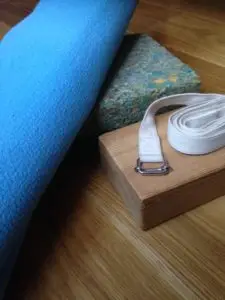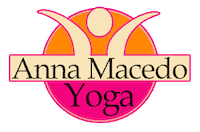What yoga equipment to buy?
Iyengar Yoga is known for many things, one of which is its use of equipment, known as ‘props’.
What Yoga equipment do you really need?

what yoga equipment
When Mr. Iyengar started to practice Yoga in the 1930’s, there was no such thing as ‘Yoga equipment’. As the decades passed he realised he could improve results 1. by using what he found around him- tables, chairs, broom handles, railings etc.
This improvisation led to the creation of props that could be standardised and reused.
Now selling Yoga equipment is big business. Many other Yoga schools have seen how Iyengar Yoga uses equipment and have copied some of the methods.
There is no need to spend lots of money. In the UK stores like ‘TK Maxx’ sell Yoga mats for around £10-12. In the US ‘Winners’ is a similar discount store. You need to check three important things with a Yoga mat:
- It must NOT be STRETCHY as the hands and feet will move away from each other
- It must NOT be thick FOAM that allows the feet to slip
3. It must NOT have cut out HOLES as these give uneven grip
So how can you find these things out? Unfortunately looking at a photograph online can be deceiving. Many Yoga mats can look similar. You really need to go into a store where you can check the mat out for yourself. Some mats are lightweight- this can be useful if you have to carry it around a lot. Some mats are very thin, but they offer very little padding if you kneel on them, for example. The mat shown in the photograph is a typical of the type I use, it is 3mm thick and has a slightly textured finish which helps make it ‘sticky’.
In India, carefully folded cotton blankets are used to provide a lift- in the west we tend to use foam blocks. The lightweight ones are 12″ (30cm) wide and very useful for poses like Shoulder stand (Salamba Sarvangasana) to help protect the cervical spine. You will need 4 foam blocks as a minimum for this pose. One or two belts can also be used- I recommend a 2 metre long belt with a square buckle as shown in the photograph (not a ‘D’ ring).
Once your practice develops you may want to add a bolster (I like kapok filled ones that soften with usage rather than solid foam that will never soften always remain cylindrical). Cork bricks (the same size and shape as a house brick) can be used in many ways- my favourite is to lie down with one in the dorsal spine to encourage the chest to open.
In my Yoga classes in Horsham, West Sussex, I often buy Yoga equipment in bulk for my students. Most start with a mat, 4 foam blocks and a belt. You can tie the belt around the blocks to make a ready made handle. You can add a small cheap blanket to that list- I got mine for £2 from IKEA- you definitely don’t need to buy a special ‘Yoga blanket’!
